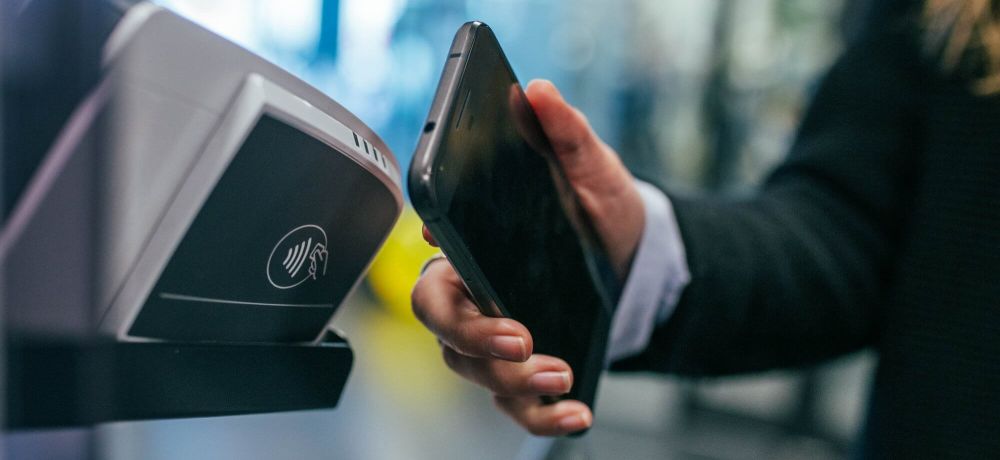
The untold secret to avoiding price pain
Have you found yourself ignoring the ever-running meter in a taxi? If so you did it because you wanted to avoid the negative experience of paying. On the taxi meter, you can see the price go up with every minute. And every euro extra brings a painful sensation. That’s price pain.
Every time we buy something we experience a sense of pain. The higher the price, the higher the price pain. Two scientists, Drazen Prelec and George Loewenstein (1998), referred to this price pain as the “pain of paying“. Don’t think of it as physical pain, but as the activation of brain areas associated with physical pain. This results in an unpleasant feeling.
Uber revolutionised the payment system for taxis by eliminating the awful visual meter. No physical payments needed because you pay in-app with your credit card and you know the price beforehand. This results in a decreased pain of paying. Using a credit card makes you feel like you’re not spending ‘real’ money.
Price pain or the pain of paying
Price pain is the human tendency of trying to avoid losses at any cost. That’s called loss aversion. We experience the pain of losing twice as strong as we experience the joy of equivalent gains or earnings. Here’s the first advice: Make the anticipated loss of money as small as possible for your customers.
How? The intensity of the pain of payment depends on two principles: how you are paying and when you have to pay.
How are you paying?
A plastic card doesn’t reveal the amount. Paying with credit card is less painful than paying in cash. That’s referred to as the cashless effect. Even paying in a foreign currency or with plastic coins keeps people from thinking of the actual value. Thus, pain is lower.
When do you have to pay?
Let’s talk about the timing of paying. Paying before consuming the product shifts the attention away from this pain.
It makes a difference in what consumers focus on when making a buying decision. When you show the product before the price, the focus lays on the product’s qualities. Thus, the consumers base whether they like and are going to buy the product on these. The price pain is lower. If the price is presented first, the focus is on the economic value of the product.
Professor Brian Knutson investigated the brain activation of people when looking at products and their prices. Looking at high prices activated the brain regions associated with pain, the insula. When they showed the products without their price, a brain region associated with reward, the nucleus accumbens, was active and affecting the purchase decision.
Thus, if you want to highlight the quality and features of the product you should present the price later. But there are also situations in which you want to focus on the price to show that your sale is a good deal.
Reducing Price Pain
Price pain is easily triggered. Knutson’s study also showed that looking at currency symbols already cause the activation of the pain region in the brain. The easiest thing you can do is to remove the currency symbol. A price of 99 might cause less pain than €79. Make clear though that it’s a price!
You could also think about getting rid of your pricing and numbers altogether. Tapas bars in Spain use different colored toothpicks, others use different colored plates corresponding to prices. This way, your brain won’t experience the pain of pricing. It also stops you from being confronted with the costs and price pain during the meal. All you need to do is to collect the small plates you picked and pay for everything afterwards. You can get creative!
Our perception of prices
Our brain evaluates a price within the first milliseconds. This first impression creates an emotional reaction that is associated with the price and the product. Ultimately, it is the feeling we have when thinking of a product that decides whether we should buy it (or not). Psychological pricing focuses on the psychological and subconscious response of customers to a price. Therefore, factors like font size, color, and length of your price matter!
Font size
Our brain subconsciously perceives a price as higher when it is visually bigger. Therefore, think about choosing a smaller font size for it. Here’s an extra tip: use bigger font sizes for the text and symbols located around the price. This will let the size of the price seem even smaller. Running a sale? Increase the size of the old price to create the same feeling. Simply changing the font size makes a difference.
Gender differences when seeing red
If your primary target group consists only of men, consider changing the color of your price tag to red. A study revealed that, in contrast to women, men believe a price is fairer when presented in red instead of black. Men experience positive emotions when looking at red prices and base their decision on these. Women, on the other hand, evaluate a price more sceptically and thoroughly when displayed in the color red.
Amount of digits
The written numerical length –the number of digits– plays a role for the first impression of a price. People perceive €999.99 as significantly higher than €999. Even though the economic value is the same. This misperception is referred to as charm pricing. We will talk about that later. First, we will give you a few tips on reducing the price pain for long prices.
Solutions
If you can’t eliminate a decimal of your price you could reduce the font size of the digits after the comma. This will make the number appear shorter. Second, when seeing a price, we read it out loud in our heads. The longer the phonetic length the more mental resources we need to process it. The brain concludes the size of the price from the amount of capacity used. Therefore, aim for prices with fewer syllables. Finally, removing the comma in between the decimals reduces the phonetic length. As a consequence, the price is easier to process and appears lower.
Charm Pricing
Our brain uses the first digit as a hint of the magnitude of the price. During the initial assessment, the brain puts €499 closer to €400 than to €500.
How come?
Our brain encodes numbers so fast that the decision process starts as soon as our eyes encounter the first digit of the price. Since “4” is less than “5”, this method makes the entire cost seem less expensive, while the difference is only marginal. The phenomenon of anchoring explains it. It describes the tendency of humans to subconsciously base their decisions on the first information presented to them. The left number anchors the size of the price. Also, the most right digit makes a difference; product prices ending on 9 are more likely to sell. Researchers at MIT found that a price ending on 9 increases the demand for a product. They compared the popularity for clothing priced at €34, €39 or €44. Clothing priced at €39 was the highest in demand, not €34.

Positioning the price
In which direction do you read? The learned reading direction influences how your brain represents numbers. Left-to-right readers align numbers from left to right, like on a ruler. Thus, smaller amounts are associated with the left side, higher numbers with the right side. By placing the numbers on the left, you are triggering a mental conceptualisation of smaller prices.
It’s all about context
In his book Pre-suasion, Dr Robert Cialdini explains the importance of putting the audience in the right mindset before exposing them to the product. He refers to a study conducted by a furniture online-store in which the background of the landing page varied. Half of the participants saw an image of fluffy clouds, the other half an image of coins. As a result, the first group rated comfort (and fluffiness) as their top priority when choosing a piece of furniture. The second group rated the price as most important and thus, preferred furniture that was inexpensive. This is known as the concept of priming.
Give a reference
Imagine this: When boarding a plane, you unexpectedly get an upgrade to business class. As you have never flown business class before you will probably perceive the comfort and service as a lot better. When disembarking, you walk through first class, and suddenly your business seat doesn’t look as good anymore. It’s all about the context in which you relate something. Our brain compares deals to assess their value subconsciously. As a marketer, you have the chance to influence what is the reference for your product. Therefore, many airlines have different entrances for economy and higher classes. It prevents travellers in economy to perceive comfort and service as worse.
It doesn’t have to be a price
The reference price doesn’t have to be a price itself. Any number can act as a reference. This principle is again based on anchoring. In a study participants were asked to name the amount of money they’d spend on a package of Belgium chocolate. Before, they had to write down the last two numbers of their Social Security Number (which is randomly high or low). Depending on whether these numbers were high or low, the amount the participants were willing to pay significantly changed.
With high numbers they were willing to pay more. Next time you’re eating-out look at the order of the items on the menu in restaurants. Suk, Lee, and Lichtenstein (2012) compared the average amount spent per drink in a bar. In the first condition, people got a menu listing the cheapest drinks first. In the other condition, the drinks were listed the other way around. In which condition did people spend more money? In line with the principle of the anchoring effect people in the second condition (high to low) chose more expensive drinks on average. The price at the beginning of the list functioned as the anchor.
In a nutshell
Let’s recap. First of all, make it easy for your customers. By carefully choosing how to present a price, you can reduce the price pain and increase your customers’ satisfaction. Secondly, remember that the context and mindset of your customers significantly affect the perception of the price, and as a consequence, their purchase decision. Otherwise, you will have to pay the price for it.
If you want to learn more about behavioral insights, read our blog or watch 100+ videos on our YouTube channel!
About Neurofied
Neurofied is a behavioral science company specialized in training, consulting, and change management. We help organizations drive evidence-based and human-centric change with insights and interventions from behavioral psychology and neuroscience. Consider us your behavioral business partner who helps you build behavioral change capabilities internally.
Since 2018, we have trained thousands of professionals and worked with over 100 management, HR, growth, and innovation teams of organizations such as Johnson & Johnson, KPMG, Deloitte, Novo Nordisk, ABN AMRO, and the Dutch government. We are also frequent speakers at universities and conferences.
Our mission is to democratize the value of behavioral science for teams and organizations. If you see any opportunities to collaborate, please contact us here.
References
- King, D., & Janiszewski, C. (2011). The sources and consequences of the fluent processing of numbers. Journal of Marketing Research, 48(2), 327-341.
- Thomas, M., & Morwitz, V. (2005). Penny wise and pound foolish: the left-digit effect in price cognition. Journal of Consumer Research, 32(1), 54-64.
- Yang, S. S., & Sessarego, M. M. (2009). $ or dollars: Effects of menu-price formats on restaurant checks.
- Suk, K., Lee, J., & Lichtenstein, D. R. (2012). The influence of price presentation order on consumer choice. Journal of Marketing Research, 49(5), 708-717.
- Prelec, D., & Loewenstein, G. (1998). The red and the black: Mental accounting of savings and debt. Marketing science, 17(1), 4-28.
